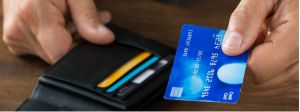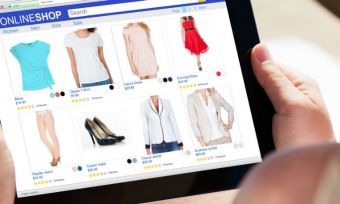Kiwis love online shopping (be it purchases we actually need or not). The convenience of ordering something new and shiny from the comfort of your couch is often too tempting to avoid.
Online shopping increased significantly during the COVID-19 pandemic. Online sales increased by 47.3 per cent in April in NZ, compared to the same time last year. And as the demand for online retail grows, it makes sense that businesses should offer easy and secure online checkout processes.
So online shoppers rejoice, it’s now even quicker and simpler to make purchases online. A new credit card payment system has done away with the need to enter card details with every purchase. We break it down below:

How does the Click to Pay system work?
Credit card companies Visa, Mastercard, Amex and Discover have collaborated to create Click to Pay, which reduces the number of payment steps at online shops. If you’ve ever gone through the process of adding something to your online cart, filled out your address, then realised you can’t find your card, this system may excite you. It removes the need to type in your credit card number every time.
After a one-time registration, you can pay online at retailers who offer the option without having to fill out forms or re-entering credit card details. Essentially, Click to Pay has been designed to mirror the checkout experience in a shop.
New Zealand is one of the first countries outside the US to introduce it. The system is already available online at The Warehouse Group, Ticketek and Mitre 10. You can also use it for purchases on international websites in countries such as Australia or the USA, where you see the Click to Pay icon.
How do I sign up?
To use Click to Pay’s secure online checkout, you need to add your existing (Visa, Mastercard, Amex and Discover) credit, debit or prepaid cards to the service. For example, visit Visa’s website, and it’s as straightforward as filling out your email, name and address and card number.
Online shops that offer the service display a little arrow icon at their checkouts. Whenever you see this symbol, you can skip the guest checkout, bypass form fields and not have to worry about remembering passwords.
How do I know it’s safe and secure?
According to the credit card companies involved, Click to Pay uses advanced technologies and multiple layers of payment security to protect cards against unauthorised use. Security utilises data on location, device identity, IP addresses and browser information.
But when you make any credit card purchases, it’s best to avoid using public computers. Stick to your own phone, computer or device if you’re saving any credit card details. Don’t click “remember me” or “trust this device” if you’re not using your own piece of technology.

How safe is it to save my credit card details online?
There are a number of protocols that an online merchant must follow if you give them permission to store your details. These include not being allowed to store your Card Verification Value (CVV), which is the three- or four-digit number usually found on the back of the card.
This policy also applies to other common sites and services, such as Google, iTunes, and Uber, etc. You’ll need to manually enter the CVV if you want to make a purchase. Canstar’s story: Is It Safe to Save My Credit Card Details on Shopping Websites? explores this topic in detail.
If you’re keen to sign up to Click to Pay, first consider whether the credit card you own suits your needs. Are you using a rewards card when it would make more sense to have a low-interest one? Could you be getting better cash-back returns? If you already know the type of credit card offer you’re after, or are considering switching, you can use Canstar’s credit card search tools to narrow down your search by offer type. Just follow the link below.
Compare credit cards with Canstar
Enjoy reading this article?
You can like us on Facebook and get social, or sign up to receive more news like this straight to your inbox.
By subscribing you agree to the Canstar Privacy Policy




Share this article